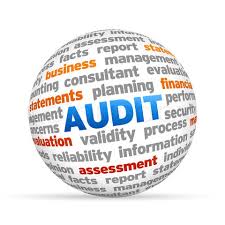Prototype Program

“By failing to prepare, you are preparing to fail” – Benjamin Franklin
Live-in relationships are getting common these days. During marriages, before distributing food to guests, the sample is checked for its taste and flavour. Alpha and Beta testing are very common in software industries. All these are examples of prototyping to ensure that long term results are satisfactory.
Prototypes are used to create a simple physical object & move beyond merely visualizing a product. It can be used to visualize the concept and share information with the entire project team. It is an excellent example of Risk Analysis (Clause 6.1) wherein all possible failures are assessed before going for mass production.
IATF subscribing OEM has also specified their requirement related to Prototype Program
- FCA Italy: 9.01103 SQ.00010
- Ford: https://web.qpr.ford.com/sta/APQP.html, WERS (Worldwide Engineering Release System) & GPDS
As per IATF 16949 Standard, clause 8.3.4.3, the following are the key expectations.
Customer requirement: If there is a customer requirement, the organization has to make a prototype program and control plan. If not, it is optional for the organization.
Same Controls: To ensure that results do not differ much in mass production while making a prototype, the organization should try to use the same suppliers, tooling and manufacturing process (wherever possible). Example: If different suppliers are used for prototype and mass production, they may not understand the problems faced during the prototype as well as the expectation of the customer. Similarly, if different tooling is used, the results may be different.
Time Plan: A time plan has to be prepared and all the activities of Prototype are to be completed as per it. As prototype production is part of the entire development process, any postponement may result in the delay of the final product launch.
Outsourcing: There can be a possibility that the organization may outsource some of the activities like Rapid prototyping by Additive Manufacturing. In such cases, the organization has to put all the controls of the supplier selection and evaluation process (Clause 8.4). The intent is to ensure that the supplier provides good quality and timely products during mass production too.
Prototype Control Plan: It is a description of the dimensional measurements, material and performance tests that will occur during the building of the prototype. The organization shall prepare a prototype control plan if required by the customer. There is NO sampling plan and inspection frequency is 100%.
Where the Prototype is needed:
- New products
- Major changes in the existing product
- After design validation to check the usability of the product and any design challenges
- To check any fitment in the assembly & how it interacts with other parts
- To find design alternatives that may work better
- To spot possible production problems
- To identify a cost-effective manufacturing process
- To sell the concept to stakeholders
- To identify the right material for the production
- For safety testing to evaluate any possible failure during actual use
Documents needed for making Prototype Program:
- APQP timing plan
- Preliminary Bill of Material
- Design Goals
- Preliminary Process Flow Chart
- Customer Requirements and Customer Specific Requirements
- Previous learnings
- DFMEA, PFMEA, Control Plan
Benefits of Prototype:
- Reduces chances of failure during mass production
- Cost of failure reduces
- Possibility of First Time Right increases
- Ontime output
- Anticipate problems in advance
- Reduction in development time & non-value-added time
- Reduction of complexities in converting customer requirements into the finished product
Challenges with Prototype:
- Cost of Development increases
- Development Time increases
- Variation ins results during prototype and mass production
- Suppliers, Tooling and outsource processes are different in Prototype and Mass Production
- Prototype testing is generally done in ambient conditions (which is not the real condition)
Some question to ponder:
- The sampling plan and inspection method remain the same for Prototype and Production Control plan? Do the organizations understand the difference?
- How many organizations apply the same control on the outsource processes and suppliers for their selection & approval as they do during mass production?
References:
IATF 16949: 2016
This is the 39th article of this Quality Management series. Every weekend, you will find useful information that will make your Management System journey Productive. Please share it with your colleagues too.
Your genuine feedback and response are extremely valuable. Please suggest topics for the coming weeks.


Very nice and informative.
?? excellent work and I know you will bring out a working book out of it. I have a question on how many types of prototypes and how situational decision can be taken on what type of prototype needed. If it is a new product or minor change, major change, functional, aesthetically then things will vary. Once I saw in a TV channel that an automobile company (in that case was BMW) was making a visual prototype. That is exact replication of the new car drawn and true visual model is devleloped as a prototype, made out of clay and… Read more »
It’s perfectly describe.
Will help us .
Nicely written ?
Thanks Lalit
Thanks Soumen for the detailed feedback. Prototype can be made for any situation and type. It will depend upon the requirements.
Thanks Satyendra
Thanks Rajesh
Very nice explanation Sir.
Prototype has separate customer requirements /CSR. It is for fitment purpose and to see the actual shape of the part.
Excellent article and currently prototype accuracy is mandate for customers
Test comment
Test reply
Thanks Pradip
Very true Sathish
Thanks Chella